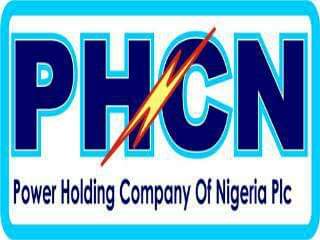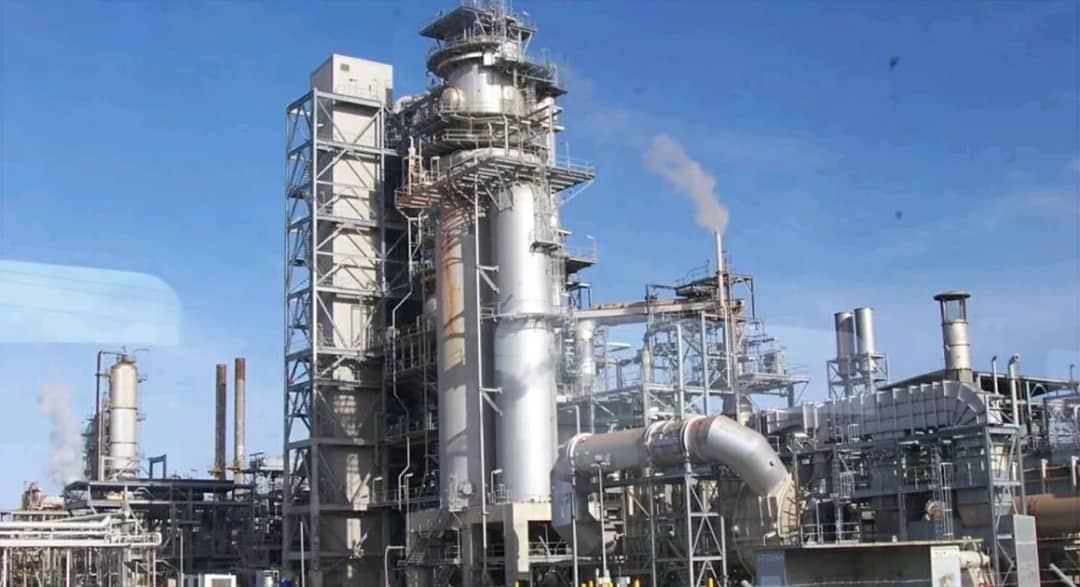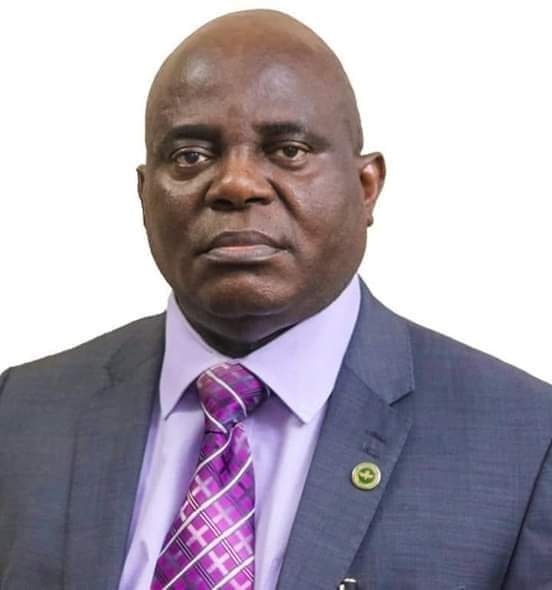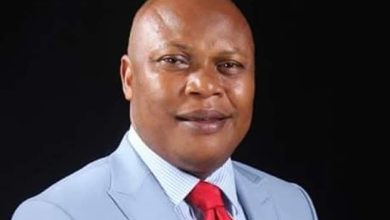
The early man relied on fire for the luxuries of light, heat, and cooking. Today, we take all these luxuries for granted. At the flick of a switch, a push of a button or the turn of a knob, we can have instant power. Indeed, electricity plays a huge part in our everyday lives.
Whether it is at home, school, or our workplaces, our daily routines rely heavily on the use of electricity. From the time we wake up in the morning until we hit the pillow at night, our daily life is dependent on electricity.
In countries like the United States, electricity is an essential part of modern life and important to their economy. According to research, total electricity consumption in 2020 was about 3.8 trillion kilowatt and thirteen times greater than electricity use in the 1950s.
The total electricity consumption includes retail sales of electricity to consumers and direct use of electricity which is both produced by and used by the consumer. The industrial sector accounts for the majority of direct use electricity in the United States.
In 2020, retail sales of electricity were about 3.66 trillion kWh, equal to 96 per cent of total electricity consumption. Direct use of electricity by all end-use sectors was about 0.14 trillion kWh, or about four per cent of total electricity consumption.
Related: Electricity Transmission And FG’s Monopoly
Total annual U.S. electricity consumption increased in all but 11 years between 1950 and 2020, and eight of the years with year-over-year decrease occurred after 2007. The highest level of total annual electricity consumption occurred in 2018 at about four trillion kWh, when a relatively warm summer and cold winter in most regions of the country contributed to record-high residential electricity use of nearly 1.5 trillion kWh.
Total U.S. electricity consumption in 2020 was about four per cent lower than in 2019, with decreases in the commercial and industrial sectors. Electricity retail sales to the industrial sector in 2020 were about 14 per cent lower than in 2000, the peak year of U.S. retail sales to the industrial sector. The industrial sector’s share of total U.S. electricity retail sales dropped from 31 per cent in 2000 to 25 per cent in 2020, while residential retail sales increased by about two per cent.

Electricity supply in Nigeria dates back to 1886 when two small generating sets were installed to serve the then Colony of Lagos. By an Act of Parliament in 1951, the Electricity Corporation of Nigeria (ECN) was established, and in 1962, the Niger Dam Authority (NDA) was also established for the development of Hydro Electric Power.
In 1972, the two were merged to form the National Electric Power Authority (NEPA). In a bid to unbundle them and as a result of the power sector reform process, it was in 2005 renamed Power Holding Company of Nigeria (PHCN).
Related: Electricity Consumers Lament In Akwa Ibom, Score PHED Low
Research shows that Nigeria has an estimated 176 trillion cubic feet of proven natural gas reserves, making her one of the world’s top 10 countries with natural gas endowments and the largest in Africa.
Electricity energy production in Nigeria over the last 40 years varies from gas-fired, oil-fired hydroelectric power stations to coal-fired with hydroelectric power system and gas-fired system taking precedence. This is predicated by the fact that the primary fuel sources (coal, oil, water, gas) for these power stations are readily available.
Electricity plays a very important role in the socio-economic and technological development of every nation, but the electricity demand in Nigeria far outstrips the supply which is epileptic in nature. Even with the availability of vast natural resources, Nigeria is faced with acute electricity problems, which is hindering its development.
Though our country has been generating electricity in commercial quantities for over a century, the pace of electricity infrastructure development in the country is very slow, even as power supply remains highly inadequate. According to findings, in 2013, two segments of the country’s power sector, namely generation and distribution, were privatized to settle challenges associated with the initial monopoly of government in power generation, transmission and distribution. In the end, power supply remains largely inadequate, unaffordable and unreliable in the country.
Presently, 97 million Nigerians or 47 per cent of the Nigerian population, which, according to findings, is more than twice the population of Canada, are not connected to the national power grid, while those who are lucky to be connected, are faced with the challenge of power supply as about approximately 90 per cent of total power demanded is not supplied.
The problem is that though the total installed generation capacity in the past year was 12,522 MW, the average operational generation capacity is just 3,879MW of which 7.4 per cent is lost in transmission, and up to 27.7 per cent load is rejected at distribution, thereby leaving the country with about 2,519MW.
This situation makes Nigerians to go into self-generation of their electricity with highly polluting off-grid alternatives and at a cost that is more than twice the cost of grid-based power. As years passed by, precisely from 2016, electricity demand in Nigeria keeps rising significantly, with household electricity demand, which is said to have the largest share, rising more as a result of the growing urbanization (at a rate of 4.23 per cent per annum) and population growth (estimated at 2.7 per cent per annum, while global growth rate is 1.1 per cent), at rates more than twice global averages. Also, industrial and commercial demand increases by 4.5 per cent and seven per cent.
Read Also: Udom Emmanuel’s Power Sector Feats
Years ago, a study estimated electricity demand to rise to 45,490 MW by 2020 and by 213,122 MW by 2040. Though the results of electricity demand studies vary widely, they all concluded that the current gap between supply and demand is already very substantial and that it will become more entrenched under a ‘business as usual’ scenario.
The poor performance of Nigeria’s state-controlled power sector, resulting in unstable electricity supply and frequent blackouts, has long been seen by ordinary Nigerians as evidence of the ineffectiveness of their governments.
According to research, Nigerian governments have since the advent of democracy in 1999, spent an average of US$2 billion yearly on the provision of electricity, but with little service improvements to show for it.
It could be recalled that in August 2010, eleven years ago, the then president, Dr Goodluck Jonathan, launched the Power Sector Reform Roadmap aimed at shifting the running of power utilities to the private sector which included the privatization of the state-owned Power Holding Company of Nigeria (PHCN).
Over the past decades, successive governments have strived to solve the energy deficit problem of this country by maintaining a monopoly in power provision and injecting money into the poorly-managed sector.
Three years after, precisely in late 2013, when almost all of the six power-generation plants and 11 distribution companies removed from PHCN were eventually sold, Nigerians were expecting a change and an end to the frequent power outages. Research shows that though there were some improvement as power generation reached a new peak of 5,075 MW few months later, levels of supply and the overall production capacity of around 6,427 MW was grossly inadequate then.
To assist these companies to stand, the Central Bank of Nigeria (CBN) in early 2015 launched a N213billion (US$1.1billion) Nigeria Electricity Market Stabilisation Facility to provide operators with soft loans, even as government also raised prices paid by electricity consumers under the Multi-Year Tariff Order (MYTO) introduced in June 2012 to gradually make tariffs more cost-reflective to encourage private investment. The last adjustment in the current MYTO was done in 2015 to last till 2024, during which prices were raised by an average of 45 per cent which witnessed series of criticisms by labour unions and various groups.
Nigeria currently has 23 power generating companies with the top six providing the country with electricity being Egbin Power Limited, Transcorp Power, Shiroro, Kainji/Jebba, Sapele, and Geregu. According to findings, these power generating plants are connected to the national grid with the capacity to generate 11,165.4 MW of electricity. The generation sub-sector is also in operation with a total installed capacity of 10,396 MW (available capacity of 6,056 MW) with thermal-based generation having an installed capacity of 8,457.6MW (available capacity of 4,996 MW) and hydropower having 1,938.4 MW of total capacity.
In a report in one of the national dailies, the minister of power, Engr. Sale Mamman was quoted as saying that Nigeria currently has an installed generation capacity of 13,000MW. Mamman disclosed that Nigeria’s installed grid power generation capacity has grown from 8,000 MW to 13,000 MW under the leadership of President Muhammadu Buhari.
Investigation indicates that though citizens’ demands are not met, yet our country is currently supplying electricity to some other countries. Investigation shows that the progress in the generation of electricity in Nigeria is hindered as a result of inadequate generation availability, inadequate and delayed maintenance of facilities, insufficient funding of power stations, as well as obsolete equipment, tools, safety facilities and operational vehicles. Others are inadequate and obsolete communication equipment, lack of exploration to tap all sources of energy from the available resources, and low staff morale.
Experts attribute the inability of the country to meet electricity demand of her citizens to its policies, regulations and management of operations and as we all know, shortage of reliable power supply is a constraint on the country’s economic growth. On the issue of transmission, it is realized that the transmission system in Nigeria does not cover every part of the country. Currently, it has the capacity to transmit a maximum of about 4,000 MW and is technically weak, therefore very sensitive to major disturbances.
The country’s transmission network consists of high voltage substations with a total (theoretical) transmission wheeling capacity of 7,500MW and over 20,000km of transmission lines. Last year, the Transmission Company of Nigeria (TCN), had hinted that the country’s electricity transmission capacity will hit 20,000 megawatts (MW) in the next three years, precisely in 2023.
The managing director, TCN, Usman Mohammed, made this known while interacting with newsmen in Abuja. According to him, while the current capacity that year, 2020, stood at about 8,100MW, in real term, only an average of 4,000 MW is wheeled to consumers, expressing optimism that

Nigeria can achieve a wheeling capacity of 10,000MW by July 2020.
The TCN General Manager, Public Affairs, Ndidi Mbah, had also stated in a release that TCN was religiously implementing the Transmission, Rehabilitation, and Expansion Programme (TREP) in Ogba Sub-station under which the capacity of the company will be expanded to 20,000MW by 2023.
Prior to the implementation of TREP during which an installation of the 100MVA power transformer was made, Ogba Sub-station had a total of two units of 60MVA 132/33 KV power transformers, and one unit of 45 MVA 132/33 KV mobile power transformer. To ensure optimal utilization of the newly installed power transformer, a brand new switchyard made up of 132KV, 33KV and three z33kV feeders were equally installed and commissioned.
A year after, (2021), the transmission wheeling capacity moved from 4,000 MW to 5,300MW, increasing in 1.300 MW, which is higher than average operational generation capacity of 3,879MW but far below the total installed generation capacity of 12,522MW.
The reason as given by experts is that the entire infrastructure is essentially radial, without redundancies, thus creating inherent reliability issues.
The major transmission problems identified by experts are that transmission is funded solely by the Federal Government whose resource allocation cannot adequately meet all the requirements.
Moreover, the current maximum electricity wheeling capacity is still below the required national need. Some sections of the grid are out-dated with inadequate redundancies as opposed to the required mesh arrangement. The Federal Government lacks the required fund to regulate, update, modernize, maintain and expand the network. There is regular vandalism of the lines, associated with low level of surveillance and security on all electrical infrastructures. The transformers deployed are overloaded in most service areas, spare parts for urgent maintenance are inadequate, even as there are usually delays in the implementation of new transmission projects.
It is worthy of note that delays in implementation of new projects have posed serious challenge in the power sector. Investigation shows that some states in the country are facing the challenge of delayed implementation of new projects. Akwa Ibom State is one of such states.
*Akwa Ibom Electricity Transmission Challenge*
Over the years, Akwa Ibom State has faced unjust treatment in the area of power transmission projects. Most of the transmission projects that commenced in Akwa Ibom State over seven years ago are still uncompleted. These have contributed to, and hinder electricity transmission in the state.
For instance, a 3 x 150MVA power transmission substation designed to evacuate power from Ibom Power Plant, Aluminium Smelter Company of Nigeria (ALSCON) and the proposed QIPP Power Plant has been abandoned by the National Integrated Power Projects (NIPP) since 2008.
The 3 x 150MVA transmission substation which can take about 360 megawatts of power with a control room for ALSCON to receive power from Ibom Power has also been left uncompleted till date, though the transformer arrived since April 2008 (13 years now). The transmission line from Ikot Abasi to Ikot Ekpene, which is about 80km, has not been completed, even as the erection of the transmission tower has not been completed.
The annoying aspect is that the161km transmission line from Ikot Ekpene to Ugwuaji in Enugu State had since been completed over four years ago, even when it is twice the distance of the transmission line from Ikot Abasi to Ikot Ekpene. The transmission line from Ugwuaji in Enugu State, which is about 210km, has been completed, even as the line from Makurdi to Jos, which is about 277km, was completed over seven years ago.
The only line that has remained uncompleted is the transmission line from Ikot Abasi to Ikot Ekpene in Akwa Ibom State. Why the unjust treatment?
Recently, the managing director of Ibom Power Company Limited and senior special assistant to the governor on power, Mr Meyen Etukudo, had, during a courtesy visit by the managing director of Transmission Company of Nigeria (TCN), Sule Ahmed Abdulaziz, and TCN’s top management to Ibom Power Plant in Ikot Abasi, decried the unjust treatment meted out to Akwa Ibom State in the area of power transmission projects and called on the TCN management to intervene urgently.
He drew the attention of the TCN delegation to the proposed 2 x 60MVA substation to be constructed at Oron, which survey plan, he said, has been submitted by the state government to the TCN. It is worth mentioning here that though the survey plan had since been sent to the TCN for them to mark out the line route from Eket to Oron, the line routes have not been marked out to enable the government address way leave issues and pay compensation, whereas, other transmission lines, probably in other places that were awarded within the same period, have since been completed.
According to findings, if the transmission line is not completed, it will pose power evacuation challenges for Ibom Power Plant, the proposed 575megawatts Phase 11 of Ibom Power Plant, as there will be no evacuation route.
The TCN helmsman had said the TCN’s management has held meetings with the Bureau of Public Enterprise (BPE) where all these projects were discussed and that the BPE has given the TCN February 2022 as deadline to complete all the projects.
According to him, contract for the abandoned 3 x 150MVA transmission substation in the state has been taken over from the NIPP by Siemens under the agreement with NIPP, as NIPP has met with all the contractors and they have agreed to complete the projects by February 2022. In the case of power distribution, it is worth stating that electricity distribution systems have over the years undergone major changes to accommodate the development of alternative sources for generating electric energy and providing enhanced opportunities for small power producers and co-generators.
Findings show that in most locations in Nigeria, the distribution network is poor, the voltage profile is bad, and the billing is inaccurate, which experts say are caused by weak and inadequate network coverage, overloaded transformers and bad feeder pillars, substandard distribution lines and poor billing system.
Others are unwholesome practices by staff and very poor customer relations, inadequate logistic facilities such as tools and working vehicles, poor and obsolete communication equipment, low staff morale, lack of regular training and insufficient funds for maintenance activities.
Research findings indicate that distribution networks carry power the last few miles from transmission or sub-transmission to consumers, while power is carried in distribution networks through wires either on poles or, in many urban areas, underground. According to experts, distribution networks are distinguished from transmission networks by their voltage level and topology. Lower voltages are used in distribution networks, as lower voltages require less clearance. Typically, lines up to 35 KV are considered part of the distribution network. The connection between distribution networks and transmission or sub transmission occurs at distribution substations as they have transformers to step down voltage to the primary distribution level.
Initially, distribution networks were designed as passive systems which provided one-directional links between the transmission network and electricity end users. This created many new challenges for utilities and requires distribution networks to be operated as active distribution systems, with real-time control and optimization of multiple distributed energy resources
The distribution networks which act as an intermediary between distribution substations and consumers, comprises of feeders connected through radial structure avoiding loops termed as radial distribution network (RDN) which design comprises of various parameters including peak load, voltage profile, resistance and reactance of the distribution lines, and distance to the consumers.
The solution to electricity generation, transmission, storage and distribution in Nigeria demands holistic approaches by the three tiers of government – federal, states and local governments – by participating in development, maintenance and repairs of electricity facilities and help in fighting power sector bottlenecks.
Nigeria should try and meet electricity demand of her citizens through good policies, regulations, and management of operations, taking into consideration that shortage of reliable power supply is a constraint on the country’s economic growth.
Furthermore, adequate and quick response should be given to power generation facilities that require maintenance, sufficient funding of power stations should be made, obsolete equipment, tools, safety facilities and operational vehicles should be replaced with new ones, while abandoned transmission projects in various states like in Akwa Ibom should be completed by the Transmission Company of Nigeria to boost power transmission in those states and the country in general.
Lastly, staff in various power companies, stations and sub-stations should desist from all forms of unwholesome practices. Findings show that some of them connive with vandals to either steal or destroy electricity facilities, even as they sell out facilities provided by federal or state governments to individuals, not considering the effects of these acts on the common man. It is high time we show concern in the fate of our fatherland. If we continue in this, then, which way are we going?
Remember the lyrics of the song of the late music maestro, Sonny Okosun, in the 80s. (CHORUS) Which by way of a question, sang thus, “Which way Nigeria (2x), which way to go. I love my fatherland and I want to know, which way Nigeria is heading to. (Repeat)
“Many years after independence, we still find it hard to stand. How long shall we be patient before we reach the Promise Land? Oh! Save Nigeria, so Nigeria won’t die” (repeat chorus).




